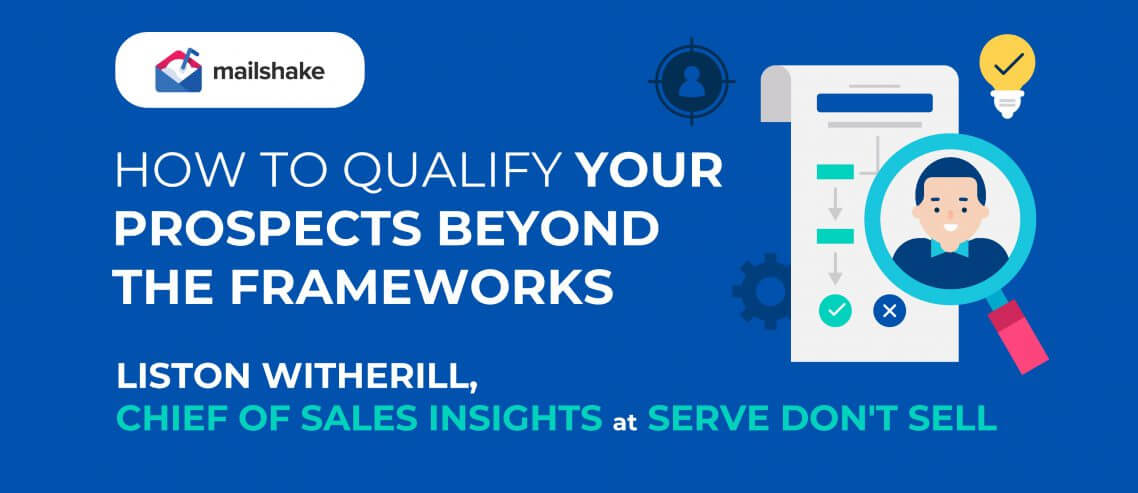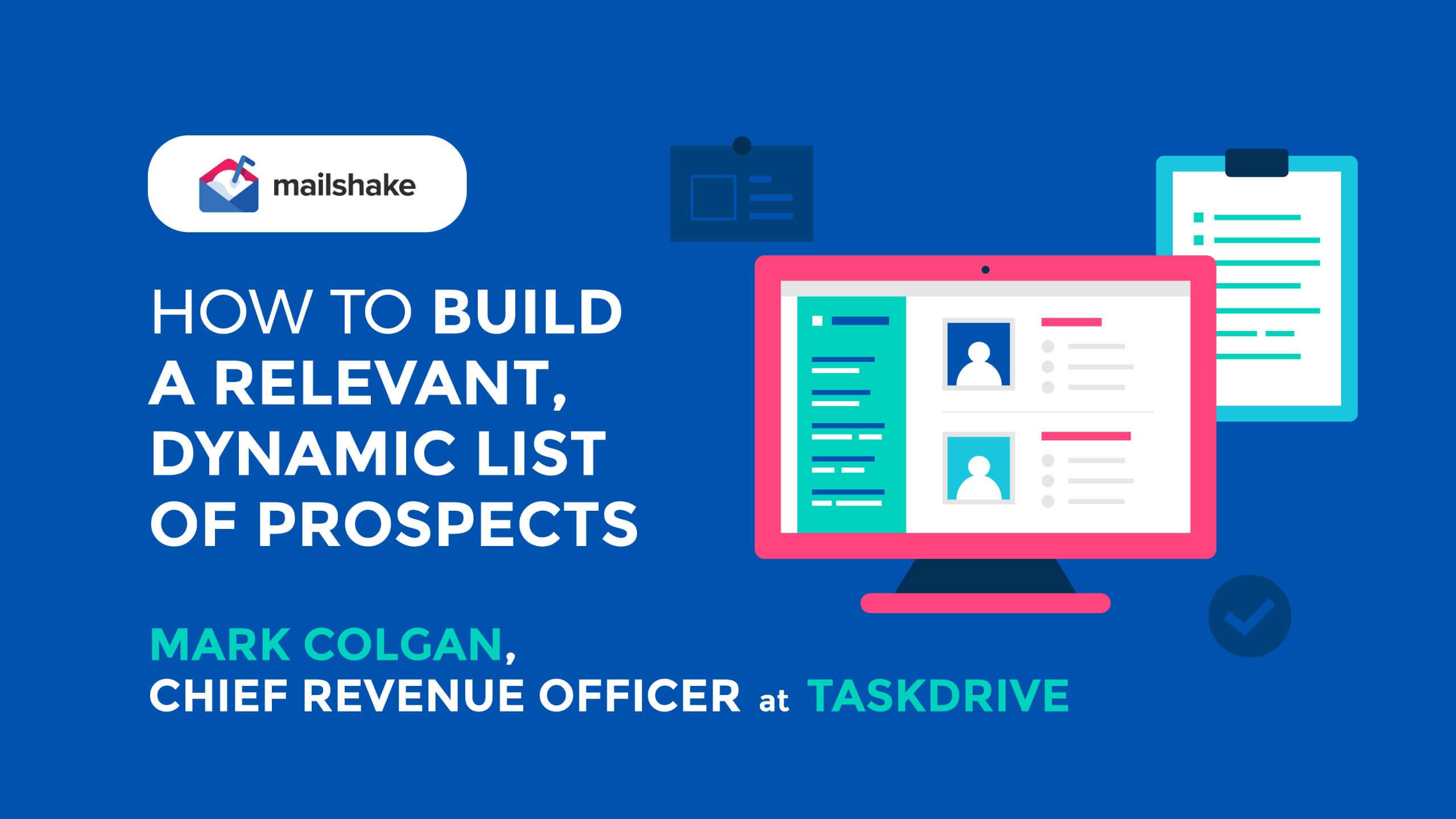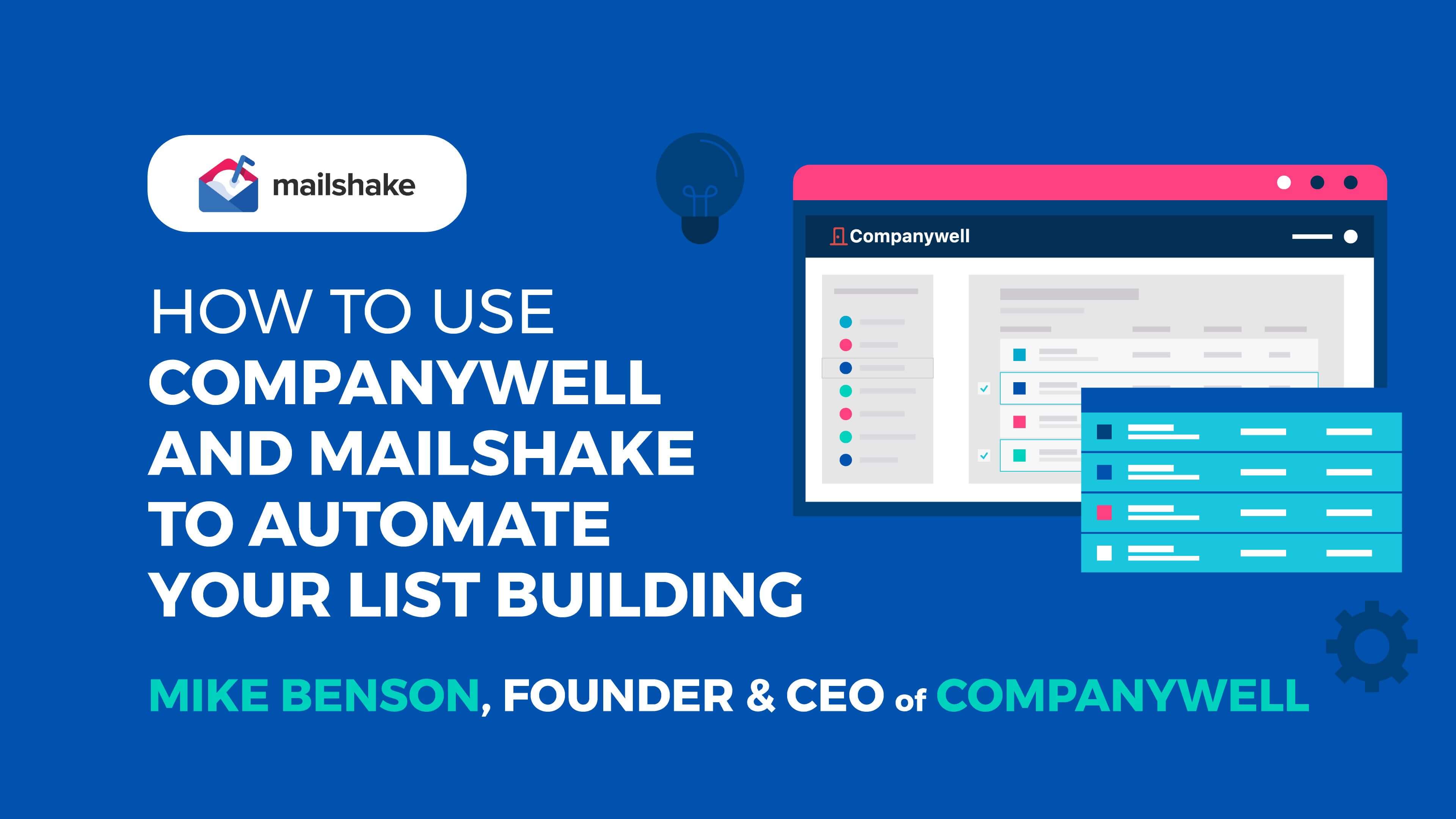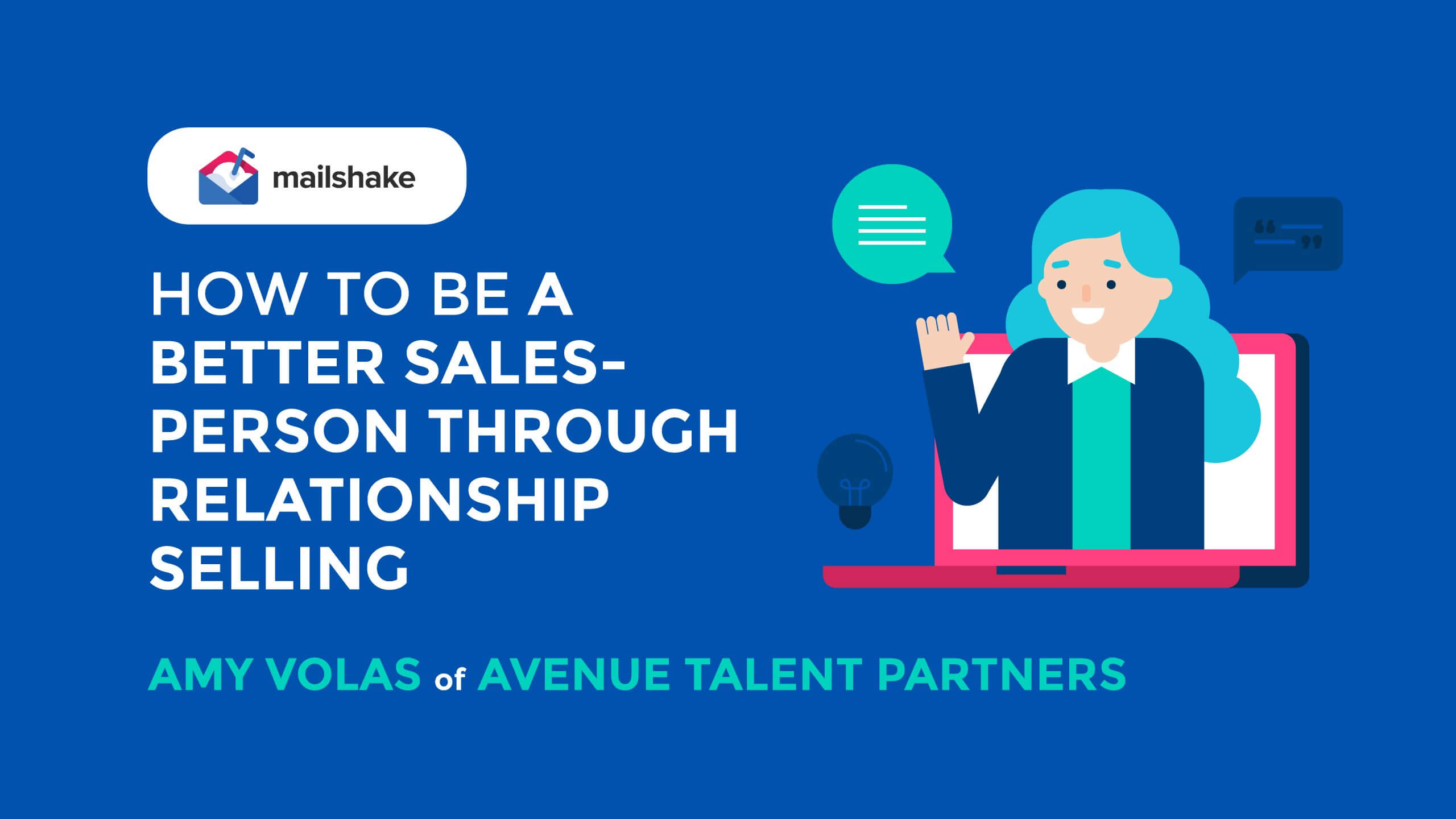How to Qualify Your Prospects Beyond the Frameworks

Contents
There are myriad frameworks out there to help you qualify prospects. In fact, there are so many that it can be pretty confusing, and – to further complicate matters – there’s no one-size-fits-all framework that works for every business or in every situation.
So how can you free yourself from qualifying frameworks in order to ask the really important questions and qualify prospects in the way that works best for your organization?
I sat down with Liston Witherill, Chief of Sales Insights at Serve Don’t Sell, to get his expert insight on qualification.
According to Liston, Serve Don’t Sell is first and foremost a mindset about how to approach sales: “I tell my clients that if we can help someone, let’s focus on doing that, and if we do it in a methodical way we can also sell something – but we shouldn’t really be selling something to people we can’t actually help.”
What’s the Goal of Qualifying Prospects? [1:14]
Liston explains: “The goal of qualifying a prospect is to make sure we’re spending time with people we can actually help, and that people we can actually help are spending time with us.
“If I’m qualifying people properly, a prerequisite is that I understand who my perfect-fit client is – I call them PFCs. If I understand who my PFC is I can more quickly qualify a prospect, but if I don’t know who my PFC is I’ll start asking things around budget, which is sort of the lazy man’s way of qualifying a prospect.”
He underlines that if he can then match the person he’s talking to to his PFC, then he automatically knows they’ll likely have the budget anyway – so that doesn’t need to be covered.
“If my PFC is a $10 million company, then I don’t need to ask them if they can afford a $5-10k per month budget,” he says.
At What Part of the Sales Cycle Does Qualifying Take Place? [2:40]
Liston focuses on inbound sales, so he qualifies leads who come to him.
How?
He considers the following questions:
- Who is this person?
- What is their company about?
- What do they want to talk about?
This way, he explains: “I can make some decisions before I even talk to them.
“Once I get on the phone, I want to make more decisions, particularly around mindset and what are the beliefs that a really good client has?
“I wanna figure out, is this person a fit or not?”
If they are a good fit, Liston tells them straight up why they should keep talking. Otherwise, he’ll typically invite them to take some other path, such as referring them on or inviting them to sign up for a relevant email course.
What Information Do You Want to Have Before a Call? [4:35]
Before a call, Liston makes sure he has two pieces of vital info:
- What is our PFC?
- How closely does this person match?
He explains: “Usually we’ll use a combination of demographic and psychographic factors, so by that I mean what’s their company size, title; if you’re in the HR space: are they hiring and firing a lot? Do they have job postings available?
“At a minimum, if you don’t go to their Linkedin page and website, and you don’t do a branded search for news on that company, you’re just being kind of lazy.”
Do You Recommend Any Qualification Frameworks? [6:23]
“Typically I recommend the PFC,” Liston says.
“Depending on your business, you may have multiple profiles, so you’re gonna have to match the individual to the profile that best fits them.”
He advises that salespeople on qualification calls stick to asking questions that tell them something they couldn’t have learned on their own.
Liston gives an example:
“I have an accounting firm client and one of the things we find with their absolute best clients is that they already have some sort of accounting system in place. So that becomes a very critical qualification. What are you doing right now to track your accounts? Easy.”
He says that while frameworks can be useful as a method of thinking what’s possible to ask, the right way to go about it is simply considering who the people are that you knock it out of the park for.
“I don’t like asking about need,” he says. “I much prefer, in qualification, to ask about pain. Why are we on the phone today? Why are you looking for help with X, what drove you to this point? If pain doesn’t exist, change becomes nearly impossible.
“One of the ways I think about a sale is essentially like change management.”
How Do You Determine What Looks Like a Qualification and What Doesn’t? [12:28]
“In order to determine if they’re qualified or not, we need to know what ‘qualified’ is. And then the question is, how far away from that definition are they?” Liston says.
He explains that the time to decide whether this lead is qualified is not on the phone call – it’s prior to that.
“I’m a big fan of saying ‘let’s put some brainpower and energy and effort into figuring out what are deal-breaker qualification steps, and what are nice-to-haves or preferences?’”
He says: “If I asked ‘what are you doing for lead gen or marketing right now?’ And they said ‘oh, we don’t have any leads’, I would say ‘well I have courses and products you can buy for that, but you’re not right for my coaching services. You don’t have the right problem for me.
“Being clear about the problems you can solve is the easiest way to do this.”





